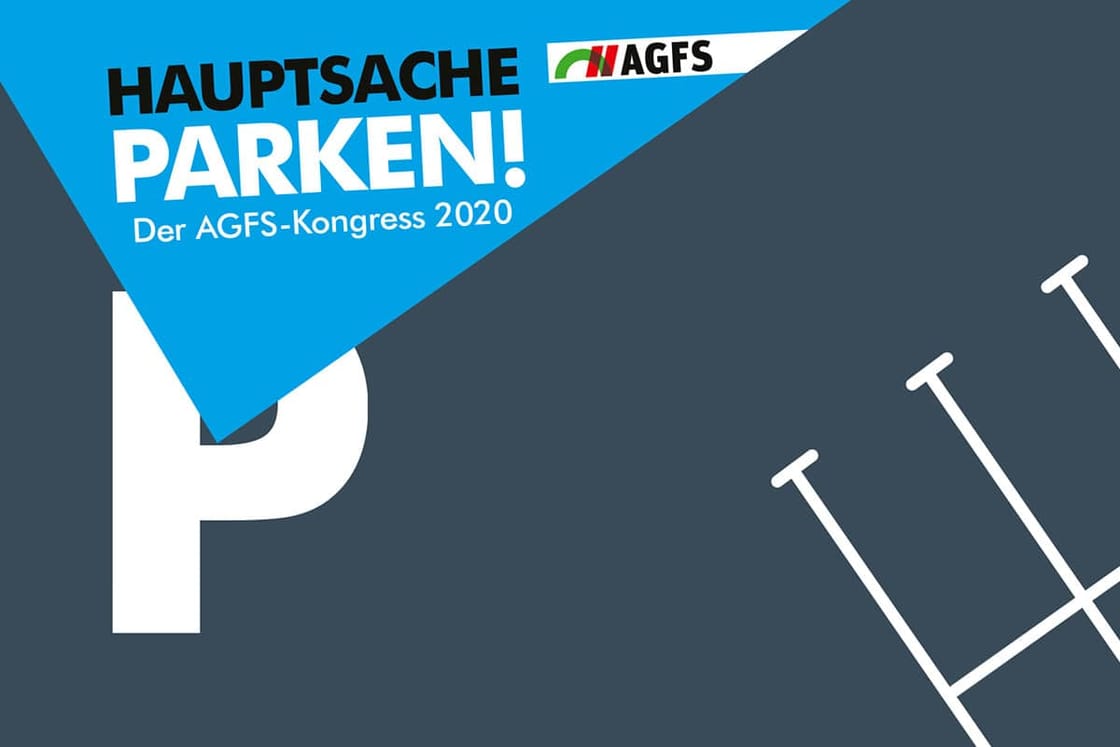AGFS Congress 2020: The main thing is parking
Once again, the AGFS (Working Group of Pedestrian- and Bicycle-Friendly Cities, Municipalities and Districts in North Rhine-Westphalia) was pleased with a participation record: More than 700 participants accepted its invitation to the congress in Essen on February 27. Under the motto “The main thing is parking,” politicians and experts addressed a key challenge of progressive transportation planning, which is to make the most efficient use of scarce inner-city transportation space for all users and to literally give more space to environmentally friendly modes of transportation, especially bicycles.
More and more people are moving to the city to live or work. They are placing increasing demands on mobility, and the climate targets that have been set simply make it necessary to switch to a lower-emission municipal transport world. Frank Meyer, Chairman of the AGFS Executive Committee, found that the traffic turnaround desired by politicians, scientists and planners will generally “cost a lot of money”, but this alone would not solve the problem with inner-city parking spaces: “Today, we would design urban planning on the drawing board in a completely different way than the structures that have grown up (…) The great challenge will be to achieve a traffic turnaround to more local mobility to environmental connectivity without turning the people affected by it against themselves”. The municipalities have important, difficult infrastructure measures to tackle and must be enabled by the state to do so, Meyer said.
Hendrik Wüst, Minister of Transport of the state of North Rhine-Westphalia, assured the guests and the interested public of the “broad support of bicycle traffic by the state parliament” and pointed out the 900 million euros in federal subsidies and also increased subsidies from the state, which, however, must also flow out, but this has not always been possible in recent years. Speeding up planning is the most urgent goal, he said, which is why 20 new planners have been hired this year at the North Rhine-Westphalia state road agency (“Straßen-NRW”), half of whom will deal exclusively with the necessary infrastructure for bicycle traffic. In addition, he said, a law for better cycling is already being drafted; it will be the first of its kind in an area state nationwide.
The invited experts from municipalities, universities and engineering firms discussed how the topics of parking and local mobility are shaping up in practice, and where municipalities might be heading in light of advances in the digitalization of parking management, traffic planning and traffic control. It therefore seems certain that the era of spontaneous car parking is coming to an end and will be replaced by increasingly sophisticated guidance and management systems. This can make parking more convenient. However, it will also be more expensive, because “space costs something” and “high-quality parking space is a business,” as Bernd Bienzeisler of the Fraunhofer Institute for Industrial Engineering IAO, noted.
Drivers who are already annoyed by high inner-city parking fees will probably have to dig deeper into their pockets in the future. As a consolation, anyone who can afford a car in a German city can still get away relatively cheaply at present – while residents’ parking fees in Berlin, Munich or Cottbus amount to between 10 and 31 euros, they are as high as 158 euros in Copenhagen and 535 euros in Amsterdam. In Stockholm, a handsome 827 euros are charged, according to an overview by Christian Adams, SHP Ingenieure, from Hanover. As the example of Hamburg shows, public parking fees rose by 22 percent for the first time in 2016, while public transportation fares have increased in price by 81 to 112 percent since 1994, as Michael Zyweck of the Rhine-Ruhr Transportation Association pointed out. For Zyweck, parking fees and municipal parking space statutes are crucial components of municipal parking management.
However, the fact that parking and money, whether as an investment or a fee, need to be thought of together more should not obscure the fact that there are also general benefits associated with solving inner-city traffic and parking problems. “Around 23 hours a day, millions of cars block valuable public space that would be urgently needed for green areas, residence, local mobility, microclimate, etc.,” writes the AGFS in its guiding theses on the future of parking. If it is possible to win this back in favor of a “green city that encourages people to meet and move around,” car drivers will also benefit. For most of the time their car is parked (97 percent of the day, after all), they and their families end up being pedestrians, bicyclists, or residents.
